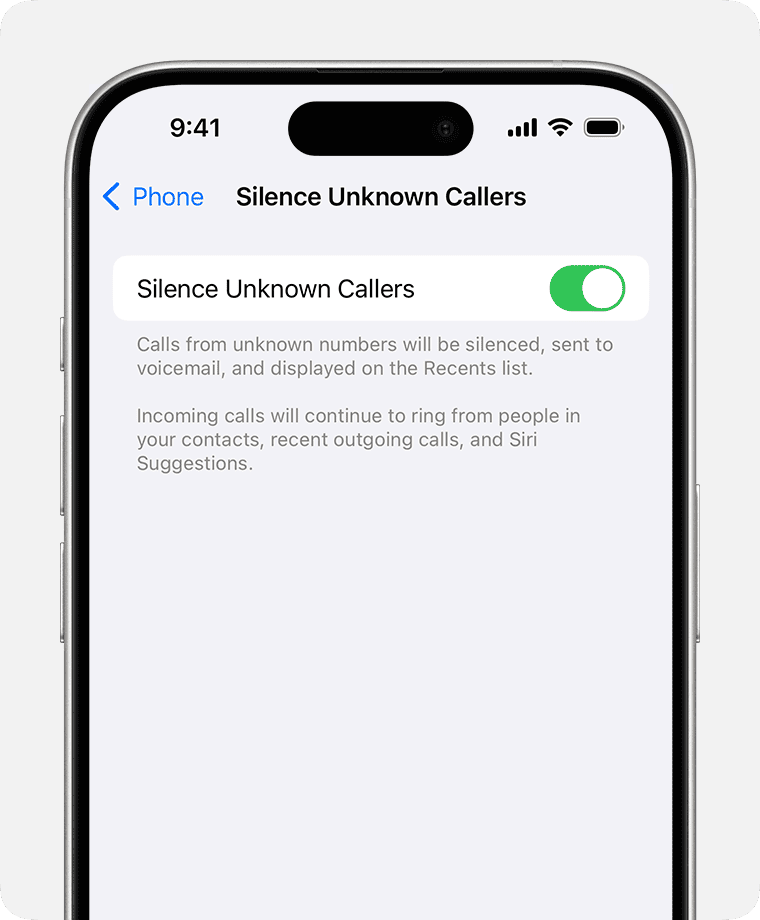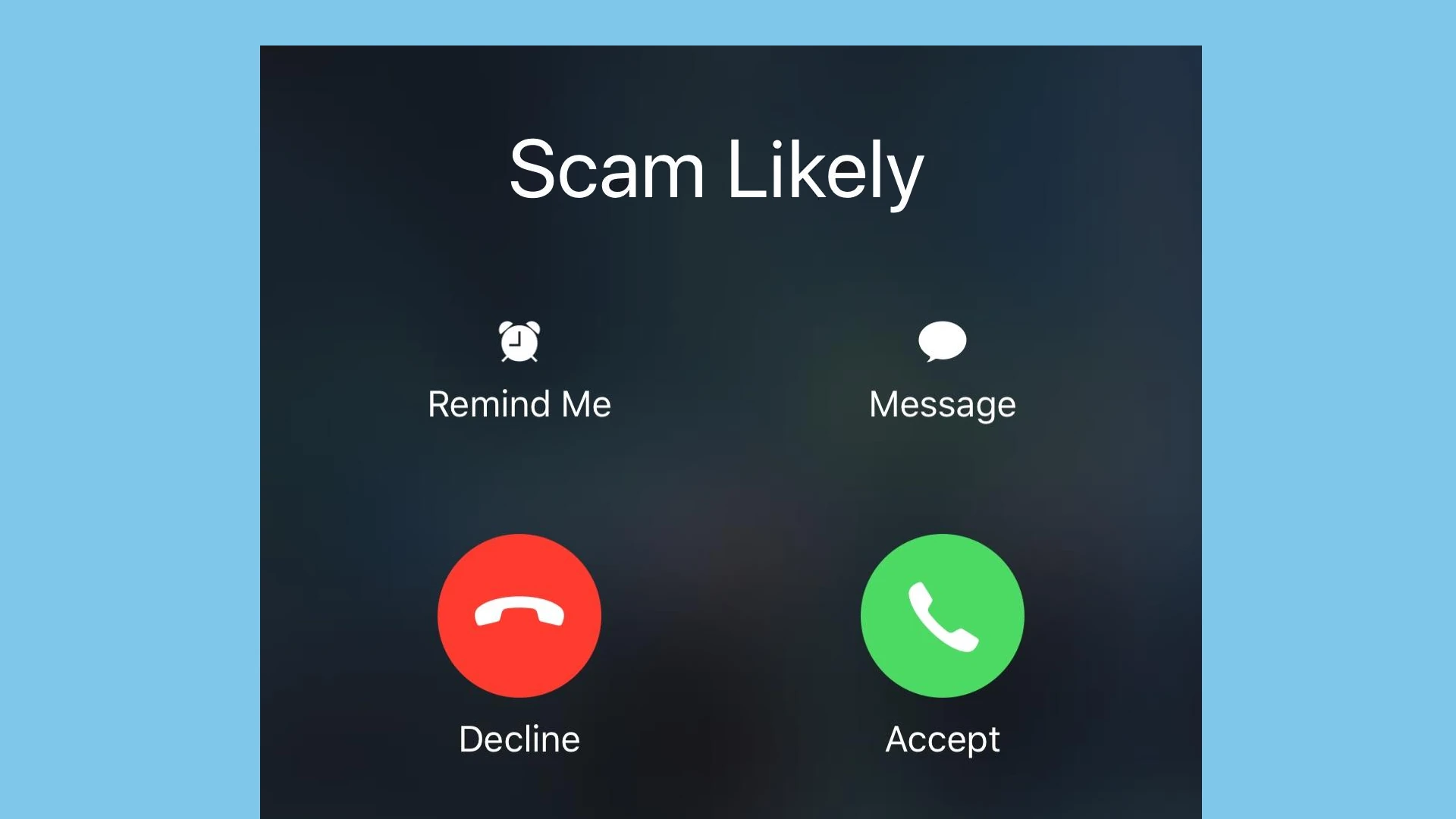Scam calls can be a big problem. They waste time and can trick people. Many phone companies now mark these calls as “Scam Likely” to warn users. You can block these calls by turning on your phone’s built-in blocking feature or using a special app.
T-Mobile and Sprint users can dial #662# to turn on free Scam Block. This stops most scam calls from coming through. For other carriers, check your phone settings or app store for call blocking options.
It’s smart to be careful with unknown numbers. Don’t answer calls from strange area codes or numbers you don’t know. If you do pick up a scam call, hang up right away. Never give out personal info over the phone unless you’re sure who’s calling.
Ways To Stop Scam Calls
Scam calls are annoying and can be dangerous. Luckily, you can take steps to block them. You can use your phone’s built-in features, apps, and other tools to stop those unwanted calls.
Carrier Features
Many phone carriers have built-in features to block scam calls. These features often work automatically. They identify calls that are likely scams and block them before they even reach you. Check with your phone carrier to see if they offer this service. Some carriers even have special codes you can dial to turn on scam blocking.
- Contact your carrier: Call your carrier’s customer service line or visit their website.
- Inquire about scam blocking: Ask if they offer automatic scam-blocking features.
- Activate the feature: If offered, follow their instructions to activate the feature. This might involve dialing a special code or changing settings in your online account.
- Explore additional options: Ask about other call-blocking services they might offer, such as blocking calls from specific numbers or area codes.
Phone Settings
Your phone also has settings that can help block scam calls. On an iPhone, you can silence calls from unknown numbers. This means calls from numbers not in your contacts will go straight to voicemail. Android phones have a feature called call screening. This lets your phone answer the call and ask who’s calling before it rings you.
For iPhone:
- Open Settings: Tap the “Settings” app on your home screen.
- Go to Phone settings: Scroll down and tap on “Phone.”
- Enable Silence Unknown Callers: Tap on “Silence Unknown Callers” to turn on this feature. This will send calls from numbers not in your contacts to voicemail.
For Android:
- Open Phone app: Tap on your phone app.
- Access settings: Look for a three-dot menu or a gear icon to access the settings.
- Enable Call Screening: Look for an option like “Call Screen” or “Spam Protection.” Enable this feature to have your phone screen calls before they ring through.
Silence Unknown Callers

If you’re tired of calls from unknown numbers, you can silence them. This feature sends calls from numbers not in your contacts straight to voicemail. It’s a quick way to reduce unwanted calls.
For iPhone:
- Open Settings: Tap the “Settings” app on your home screen.
- Go to Phone settings: Scroll down and tap on “Phone.”
- Enable Silence Unknown Callers: Tap on “Silence Unknown Callers” to turn on this feature.
For Android:
- Open Phone app: Tap on your phone app.
- Access settings: Look for a three-dot menu or a gear icon to access the settings.
- Find blocking options: Look for an option like “Blocked numbers” or “Call blocking.”
- Enable Unknown Caller Blocking: Turn on the option to block or silence calls from unknown numbers.
Third-Party Apps: Extra Protection
There are many apps you can download to help block scam calls. These apps use smart technology to identify and block scam calls. Some popular apps include Nomorobo, Hiya, and Truecaller. These apps can often block more scam calls than your phone’s built-in features.
- Choose an app: Research and select a reputable call-blocking app from your app store (Nomorobo, Hiya, Truecaller are popular options).
- Download and install: Download and install the app on your phone.
- Grant permissions: Allow the app the necessary permissions to access your contacts and phone functions.
- Configure settings: Customize the app’s settings to your preferences. This might include setting blocking levels, creating block lists, or allowing calls from specific numbers.
Popular third-party apps include:
| App Name | Platform | Key Features |
|---|---|---|
| Hiya | iOS, Android | Spam call identification, call blocking, reverse phone lookup |
| Nomorobo | iOS, Android | Spam call blocking, robocall protection, caller ID |
| RoboKiller | iOS, Android | Spam call blocking, robocall protection, answer bots |
Do Not Call Registry: Reducing Telemarketing Calls
The National Do Not Call Registry can help reduce telemarketing calls. You can register your phone number on their website. This won’t block all scam calls, but it can help. It’s a good idea to register your number even if you use other blocking methods.
- Visit the website: Go to the National Do Not Call Registry website: donotcall.gov
- Register your number: Follow the instructions to register your phone number.
- Allow time: It may take up to 31 days for telemarketing calls to decrease.
| Method | Description |
| Carrier Features | Automatic scam blocking provided by your phone carrier. |
| Phone Settings | Features like silencing unknown callers or call screening. |
| Third-Party Apps | Apps like Nomorobo, Hiya, and Truecaller that use advanced technology to block scam calls. |
| Do Not Call Registry | Register your number to reduce telemarketing calls. |
Remember, no method is perfect. Some scam calls might still get through. Be careful and don’t answer calls from numbers you don’t know. Scammers can also make it look like a call is coming from a local number. Don’t let this trick you! By using these methods together, you can stop most scam calls from bothering you.
Key Takeaways
- Phone companies mark suspicious calls as “Scam Likely” to warn users
- You can block scam calls using your phone’s settings or special apps
- Be careful with unknown numbers and never share personal info on suspicious calls
Understanding Scam Likely Calls
Scam likely calls are a growing problem for phone users. These calls use tricks to fool people and often try to get money or personal info.
Identifying Common Characteristics of Scam Calls
Scam calls often share certain traits. They may come from unknown numbers or use area codes that look local. Many use robocalls with pre-recorded messages. Some scammers try to create a sense of urgency or fear to pressure people into action.
Common scam topics include:
- Fake government agencies
- Made-up tech support issues
- Phony contest winnings
- Bogus debt collection
Scammers might also claim to be from well-known companies. They often ask for personal details or payments right away. Be wary of calls that sound too good to be true or threaten bad results if you don’t act fast.
The Technology Behind Caller ID and Spam Detection
Phone companies use special tech to spot and label scam calls. This includes checking call patterns and using large databases of known scam numbers.
Some key tools:
- STIR/SHAKEN: This system checks if a call is really from the number it claims to be.
- Scam Shield: T-Mobile’s app that blocks scam calls and shows “Scam Likely” warnings.
- Truecaller and Hiya: Third-party apps that help spot spam calls.
These systems look at things like how often a number calls, how long calls last, and if many people report it as spam. When a call seems fishy, your phone might show “Scam Likely” instead of a regular number.
Preventative Measures and Blocking Techniques
Stopping scam calls requires a mix of built-in phone tools, carrier options, and outside apps. These methods can help cut down on unwanted calls and keep your phone safer.
Utilizing Built-In Phone Features
iPhones have a “Silence Unknown Callers” option. To turn it on:
- Go to Settings
- Tap Phone
- Scroll down and tap “Silence Unknown Callers”
- Switch the toggle to on
This will send calls from unknown numbers straight to voicemail.
Android phones have similar features. The steps may vary by phone model, but usually involve:
- Opening the Phone app
- Tapping the three dots for More options
- Selecting Settings
- Finding and enabling spam protection
Both iPhone and Android let users block specific numbers. Just tap the “i” icon next to a number in recent calls and choose “Block this Caller.”
Exploring Carrier-Specific Solutions
Many phone companies offer free or paid tools to fight spam calls.
T-Mobile users can dial #662# to turn on Scam Block. This stops many spam calls before they reach your phone. To turn it off, dial #632#.
Verizon has a free Call Filter app. It flags possible spam calls. A paid version can block these calls completely.
AT&T offers Call Protect. The basic version is free and labels suspected spam. The paid version adds more blocking options.
Sprint (now part of T-Mobile) and Metro by T-Mobile both use the Scam Shield app. It helps spot and block potential scams.
Registering With the National Do Not Call Registry
The National Do Not Call Registry is a free service that can reduce telemarketing calls. To sign up:
- Visit donotcall.gov
- Enter up to three phone numbers
- Provide an email address
- Click Submit
It takes about a day for your number to be added. Most sales calls should stop within a month.
Keep in mind that some organizations can still call you, like charities and political groups. Scammers also often ignore this list.
Leveraging Third-Party Call Blocking Apps
Many apps can help block unwanted calls. Some popular options are:
- Truecaller
- RoboKiller
- Hiya
These apps use large databases of known spam numbers. They can flag or block calls before your phone rings.
Most offer free versions with basic features. Paid versions often provide more advanced blocking and caller ID.
When choosing an app, check reviews and privacy policies. Make sure you’re comfortable with how they handle your data.
Handling Scam Likely Calls After They Occur
After a scam call, it’s important to take action. This helps protect you and others from future scams.
Reporting Unsolicited Calls to Regulatory Agencies
Report scam calls to the Federal Trade Commission (FTC). Go to their website or call 1-877-FTC-HELP. Give details about the call, like the phone number and what the scammer said. The FTC uses this info to spot trends and catch scammers.
You can also report to your state’s Attorney General office. They handle local cases of fraud. Some phone companies have ways to report scams too. Check with your carrier for options.
Reporting helps stop scammers. It may feel small, but every report counts. The more people who speak up, the easier it is for agencies to act.
Securing Personal Information Post-Call
If you shared any info with a scammer, act fast. Change passwords for any accounts you mentioned. Contact your bank if you gave out financial details. Put a fraud alert on your credit reports with the major credit bureaus.
Watch your accounts closely for strange activity. Sign up for identity theft monitoring if possible. Be extra careful with future calls and emails. Scammers might try to use the info they got from you.
Don’t forget about offline security. If you gave out your address, be alert for suspicious mail or visitors.
The Aftermath of Falling Victim to a Scam Call
If you lost money in a scam, contact your bank right away. They might be able to stop or reverse the payment. Keep all records of the scam, including any messages or receipts.
Talk to friends and family about what happened. This can help you process the event and warn others. Many people feel shame after a scam, but it’s not your fault. Scammers are skilled at tricking people.
Consider joining a support group for scam victims. These groups offer advice and comfort. They can also teach you how to spot future scams. Remember, recovering from a scam takes time. Be patient with yourself as you move forward.







